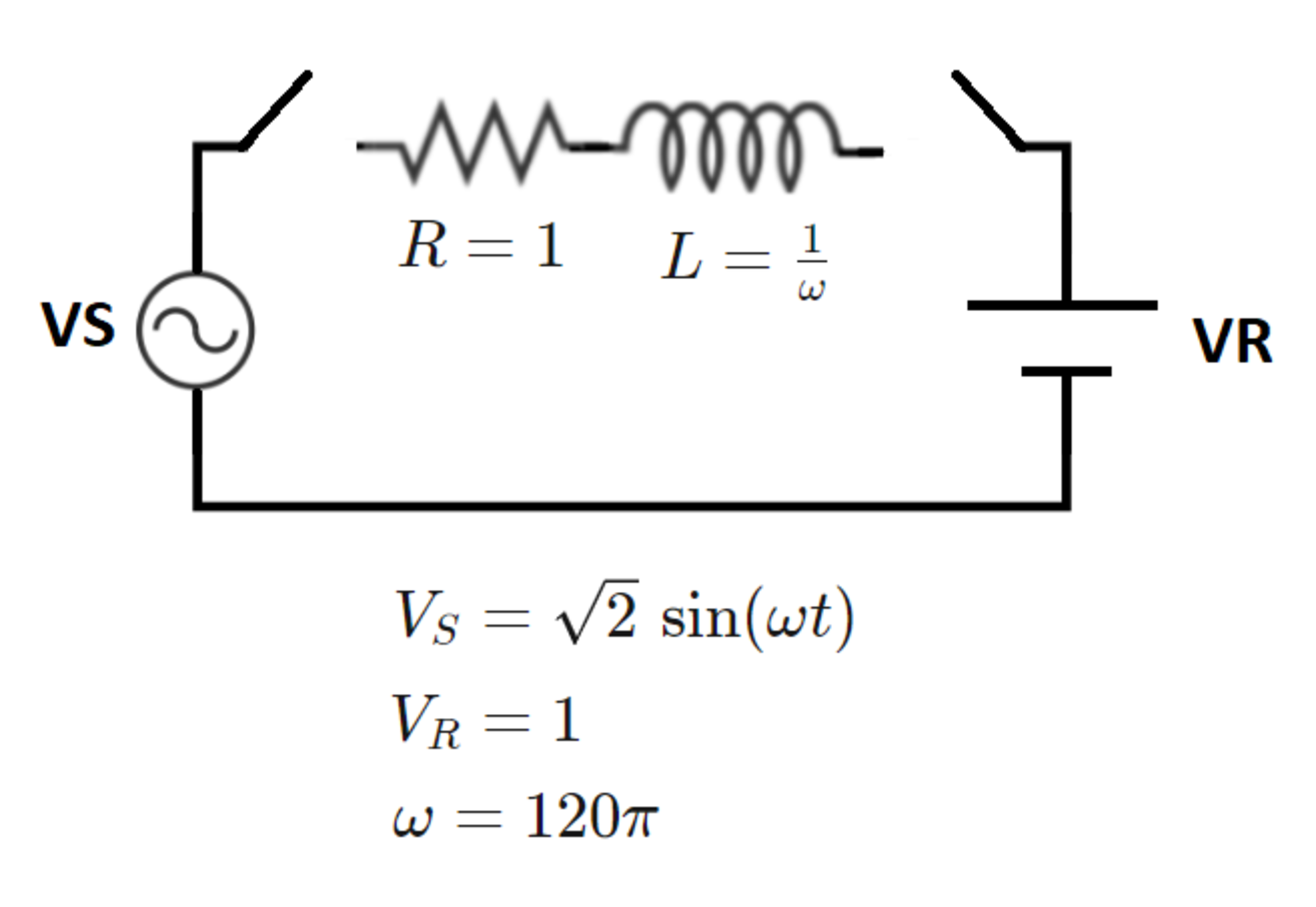ACDC
In the circuit below, the switches close at time , and the inductor is initially de-energized. Let be the maximum current magnitude seen for , and let be the minimum current magnitude seen for .
What is ?
Note:
The problem is asking for magnitudes, which are positive numbers.
Hint:
Superposition is helpful here.
essentially represents steady-state conditions

The answer is 2.0.
This section requires Javascript.
You are seeing this because something didn't load right. We suggest you, (a) try
refreshing the page, (b) enabling javascript if it is disabled on your browser and,
finally, (c)
loading the
non-javascript version of this page
. We're sorry about the hassle.
The equation of the circuit is:
d t d I + I ω = ( V S − V R ) ω
Taking Laplace transform on both sides gives:
( s + ω ) I s = ( s 2 + ω 2 2 ω − s 1 ) ω
I s = s + ω 1 ( s 2 + ω 2 2 ω − s 1 ) ω
Taking the inverse Laplace transform to obtain current as a function of time by referring to any standard table of Laplace transforms gives:
I ( t ) = e − t ω − cos ( 4 π + t ω ) + 2 2 e − t ω − 1
As time progresses, the decaying exponentials tend towards zero, and therefore the steady-state solution is:
I s s ( t ) = − cos ( 4 π + t ω ) − 1
It can be easily concluded from here that the above expression has a maximum value of zero and a minimum value of negative two. The answer is therefore 2 . I got an initial attempt wrong as I missed the word 'magnitude'.